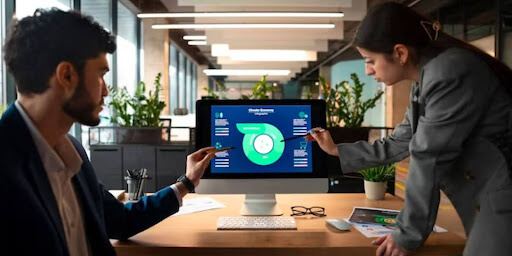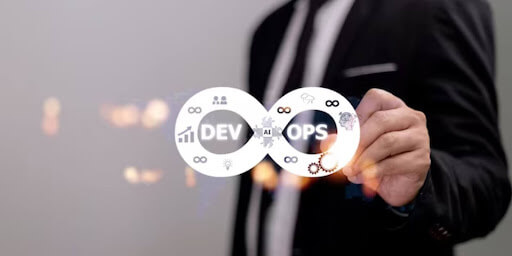 1-800-805-5783
1-800-805-5783 
Delivering high-quality applications more quickly is now possible with DevOps as the preferred method. DevOps security practices focus on collaboration, automation, and continuous integration and delivery, enabling organizations to innovate and deliver software faster.
However, with this agility comes a pressing concern: security. As DevOps continues to revolutionize the way we build and deploy software, the need to implement robust security measures in DevOps pipelines has never been more critical.
In this blog, we will explore the evolving landscape of DevOps and security how you can seamlessly integrate security into your pipelines, ensuring that speed and safety go hand in hand.
The rapid growth of DevOps has also given rise to new challenges, most notably the pressing need for security in DevOps practices. DevOps’s inherent speed and fluidity can inadvertently introduce security vulnerabilities into the development pipeline, which, if left unchecked, can lead to data breaches, financial losses, and damage to an organization’s reputation.
This emerging need for security within DevOps directly responds to the increasing threats and risks the software industry faces today.

DevOps, a software development approach emphasizing collaboration and automation, has revolutionized the industry by streamlining the development and deployment process. However, in the race for rapid development and continuous integration, the importance of security in DevOps cannot be overstated.
A. Understanding the Significance of Security in DevOps:
In the DevOps paradigm, the primary goal is quickly delivering high-quality software. While speed is crucial, it should never come at the expense of security. Security must be integrated from the very beginning of the development lifecycle.
This entails identifying potential vulnerabilities, conducting regular security testing, and implementing security controls to safeguard your applications and data. By prioritizing security, DevOps teams ensure that they do not inadvertently compromise the integrity of their systems.
B. Balancing Speed and Security in Software Development:
Balancing speed and security in software development is a delicate tightrope walk. DevOps teams must find ways to streamline and automate security practices without impeding the rapid release of new features and updates.
This is achieved through practices like “shift left,” where security is shifted earlier into the development process, and “shift right,” where security is continually monitored in production. DevOps Security best practices aim to strike a balance, enabling teams to move fast while maintaining robust security DevOps measures.
C. The Impact of Security Breaches on DevOps Processes:
Security breaches can have catastrophic consequences for DevOps processes. They disrupt the software development pipeline, damage the organization’s reputation, and lead to financial losses.
A security breach can introduce vulnerabilities, require urgent patching, and result in lengthy downtime for remediation efforts. A complete overhaul of the DevOps approach may be necessary to mitigate future risks. By taking security seriously, DevOps teams can avoid such costly setbacks.
D. The Necessity for a Comprehensive Security Strategy:
Comprehensive application security goes beyond employing a few security tools and practices. It requires a comprehensive strategy covering various aspects of development and deployment pipelines.
This strategy should encompass threat modeling, vulnerability assessment, secure coding practices, automated security testing, and continuous monitoring. A well-rounded security strategy ensures that security is an integral part of every stage of the DevOps process, preventing vulnerabilities from slipping through the cracks.

DevOps cyber Security is critical to modern software development practices, ensuring security is integrated into the entire DevOps lifecycle. Various tools and technologies are employed to identify and mitigate security vulnerabilities throughout development. Here are some essential tools and technologies for DevOps Security:
A. Static Application Security Testing (SAST) tools:
SAST tools analyze the source code and identify potential security vulnerabilities and coding errors early in the development cycle. Integrating SAST into your DevOps pipeline can prevent security issues from entering your codebase, ensuring your applications are more secure.
B. Dynamic Application Security Testing (DAST) tools:
DAST tools focus on the runtime environment of your applications. They simulate real-world attacks and assess your application for vulnerabilities by scanning it from the outside. DAST tools are essential for identifying security flaws that may not be evident in the source code alone.
C. Interactive Application Security Testing (IAST) tools:
IAST tools combine elements of both SAST and DAST, providing real-time feedback during the application’s runtime. They can identify vulnerabilities while the application is being used, making them highly effective in a DevOps environment where rapid development and continuous deployment are critical.
D. Container scanning and image security tools:
Containers have become integral to DevOps, and ensuring their security is crucial. Container scanning tools assess container images for known vulnerabilities and misconfigurations, helping you deploy secure containers across your environment.
E. Configuration management and compliance tools:
Managing and enforcing consistent configurations across your infrastructure is vital for security. Configuration management and compliance tools help maintain system integrity, ensuring that systems are configured according to security best practices and compliance requirements.
F. Security information and event management (SIEM) solutions:
SIEM solutions provide real-time monitoring, detection, and response to security incidents. They collect and analyze data from various sources, such as logs and security events, helping DevOps teams quickly identify and respond to security threats in their applications and infrastructure.
Incorporating these DevOps security tools and technologies into your DevOps practices ensures that security is integral to your development and deployment processes. This can reduce the risk of security breaches, protect your data, and maintain the trust of your stakeholders.
A. Examples of organizations with robust DevOps security practices:
B. Real-world scenarios showcasing the benefits of DevOps security:
By implementing DevSecOps, Equifax incorporated automated security checks and continuous monitoring. This proactive approach helped them identify and mitigate vulnerabilities more effectively, ensuring the security of sensitive customer data.
By automating security testing and continuously monitoring its infrastructure, Capital One significantly improved its security posture. It can now detect and address security issues faster, reducing the risk of data breaches.
C. Lessons learned from these case studies:

A. The Evolution of DevSecOps:
DevSecOps represents integrating security practices into the DevOps pipeline, ensuring that security is no longer a separate entity but an inherent part of the development process. This evolution is crucial in maintaining the balance between speed and security.
B. Integration of Artificial Intelligence and Machine Learning in Security:
Artificial intelligence (AI) and machine learning (ML) are becoming integral components of DevOps security, revolutionizing threat detection, incident response, and overall system protection.
C. Emerging Technologies in Security Automation:
Several emerging technologies are reshaping security automation within the DevOps ecosystem.

In summary, the development of DevSecOps has been essential in transforming how businesses handle security in DevOps pipelines. As this discussion has shown, integrating security into the DevOps lifecycle seamlessly has become crucial to guaranteeing the strength of software development and deployment processes.
As we look ahead, emerging security automation technologies continue redefining the landscape of DevOps security. Innovations such as advanced threat intelligence platforms, automated compliance checking, and security orchestration tools are making it easier for DevOps teams to maintain a high level of security without compromising the speed and agility of their development pipelines.
DevOps security remains critical for businesses aiming to balance rapid development and robust protection against cyber threats. Embracing the evolving practices and technologies discussed here is crucial for organizations seeking to excel in DevOps while safeguarding their digital assets and customer data.
[x]cube LABS’s teams of product owners and experts have worked with global brands such as Panini, Mann+Hummel, tradeMONSTER, and others to deliver over 950 successful digital products, resulting in the creation of new digital revenue lines and entirely new businesses. With over 30 global product design and development awards, [x]cube LABS has established itself among global enterprises’ top digital transformation partners.
Why work with [x]cube LABS?
Our co-founders and tech architects are deeply involved in projects and are unafraid to get their hands dirty.
Our tech leaders have spent decades solving complex technical problems. Having them on your project is like instantly plugging into thousands of person-hours of real-life experience.
We are obsessed with crafting top-quality products. We hire only the best hands-on talent. We train them like Navy Seals to meet our standards of software craftsmanship.
Eye on the puck. We constantly research and stay up-to-speed with the best technology has to offer.
Our CI/CD tools ensure strict quality checks to ensure the code in your project is top-notch.
Contact us to discuss your digital innovation plans, and our experts would be happy to schedule a free consultation.